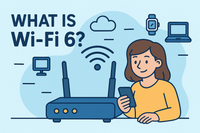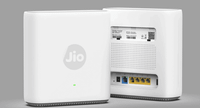Explore web search results related to this domain and discover relevant information.
District-run CPS schools are organized into 17 networks, which provide administrative support, strategic direction, and leadership development to the schools within each network.
The CPS network system enables the sharing of best practices and new initiatives across the district and drives critical supports that boost student learning. The system is designed to support the unique needs of CPS elementary and high schools and their school leaders.By eliminating a one-size-fits-all network support model, schools benefit by having support that focuses exclusively on their needs. For example, high schools benefit from access to experts who can support instructional initiatives in all core subjects.District-run CPS schools are organized into 18 networks, which provide administrative support, strategic direction, and leadership development to the schools within each network.CPS principals have access to their Network Chief as a resource and a liaison between their schools and district administration.

If you’re still using WiFi 5 or older, you’re missing out on faster speeds, lower latency, and enhanced security. With today’s heavy demand for video conferencing, cloud apps, and connected devices, knowing what is WiFi 6 and making the upgrade can transform your network performance.
You’ve probably heard of the term, but what is WiFi 6 really—and do you need it? With more devices connecting every year, WiFi networks need to be faster, more secure, and more efficient than ever.In this guide, we’ll break down everything you need to know about WiFi 6, including how it compares to WiFi 7, which routers to buy, and how to optimize your network.Learn what is WiFi 6, how it works, and why it outperforms previous standards. Discover WiFi 6 speed, routers, extenders, and comparisons with WiFi 7.Network security refers to the set of measures taken to protect a...

Reliance Jio AX6000 WiFi 6 Router offers 6 Gbps speeds and universal ISP support, but only works with DHCP not PPPoE or IPoE networks.
Wi-Fi 6 with 6 Gbps Speed: Delivers high-speed performance suitable for 4K/8K streaming, gaming, and multi-device households. Universal ISP Support (with a catch): Marketed as compatible with all ISPs — but only supports IP over DHCP, not PPPoE or IPoE. ... Reliance Jio’s latest foray into home networking the AX6000 WiFi 6 Universal Router brings impressive hardware capabilities and aggressive pricing to the Indian market.JioFiber, Jio Set-Top Boxes, OTT apps, and now smart routers form part of a vertically integrated approach to consumer tech. Owning the in-home network layer allows Jio to control quality of service, gather insights, and lay the groundwork for future offerings like cloud gaming, home automation, and security.Better network presence?Mere area me to vi sabse worst operator ban chuka hain network presence me...even bsnl better network…
Look who is turning six years old on Wednesday, July 2, 2025.
Look Who's 6 · FOX6 News Milwaukee · Share · Copy Link · Email · Facebook · Twitter · LinkedIn · Reddit · Look who is turning six years old on Wednesday, July 2, 2025. Look who is turning six years old on Wednesday, July 2, 2025. Look Who's 6FOX 6 WakeUp News ·


What's great about the Deco W7200, ... Wi-Fi 6, is that it's a tri-band model with the usual 2.4 and 5GHz bands plus an additional 5GHz band that the system uses as a dedicated wireless backhaul connection between the main router and its satellites. That dedicated backhaul is the key to unlocking the best mesh performance because it keeps those system transmissions separate from your regular network ...
What's great about the Deco W7200, along with its full support for Wi-Fi 6, is that it's a tri-band model with the usual 2.4 and 5GHz bands plus an additional 5GHz band that the system uses as a dedicated wireless backhaul connection between the main router and its satellites. That dedicated backhaul is the key to unlocking the best mesh performance because it keeps those system transmissions separate from your regular network traffic.When it debuted in 2019, Wi-Fi 6 represented a major leap forward in wireless networking. That was primarily due to the speed increase from Wi-Fi 5. Wi-Fi 6 routers could theoretically handle data throughput of 9.6Gbps, compared to 5.4Gbps with Wi-Fi 5 routers.That's one of the key reasons why Wi-Fi 6 offers top speeds that are roughly 30% faster than before. Other features of note include OFDMA, or orthogonal frequency division multiple access, which improves network efficiency by allowing your router to send data to multiple clients within a single channel at once.Is Wi-Fi 6 good enough or should I wait for Wi-Fi 7? If you don’t have a lot of connected devices on your network at once -- more than 10, say -- Wi-Fi 6 is definitely still good enough. Typical activities like streaming TV or videoconferencing don’t require much more than 5Mbps internet speeds.
Network-6 is a business consultancy, investor and growth agency, with proven success.

The current generation of cell network, 5G, has only been in our lives since 2019, but it already feels unfathomable that we could go back to 4G. But even the super-speedy 5G isn't the pinnacle of mobile internet speed, as T-Mobile has been discussing what the next big leap, 6G, will bring ...
The current generation of cell network, 5G, has only been in our lives since 2019, but it already feels unfathomable that we could go back to 4G. But even the super-speedy 5G isn't the pinnacle of mobile internet speed, as T-Mobile has been discussing what the next big leap, 6G, will bring and when it could arrive.But also included is a far larger bandwidth, up to 100-times more data usage, and over 500 billion devices potentially connected across the globe. And of course, since it's 2025, AI got a mention, with Ewaldsson also making a comment that a 6G network would be "artificially intelligent" and capable of responding to a user's particular need.On the flip side, European carriers were largely silent on the subject of 6G, with more discussion being had there about the uses of AI to help optimize 5G networks. European carriers had previously been accused of lagging behind the US and China where 5G was concerned, and it seems that trend will continue with the move towards 6G.While this may seem like a fairly small annoyance restricted to just people living in Europe, it could have knock-on effects for the entire industry. There are worries that a lack of European ambition towards 6G could lead to a split within the 3GPP, which governs how mobile networks develop.
Veterans Integrated Service Network 6 is one of the fastest-growing VA Health Care Networks, serving Veterans in the majority of Virginia and all of North Carolina.
Veterans Integrated Service Network 6 (VISN 6), also known as the VA Mid-Atlantic Health Care Network is one of the fastest-growing VA Health Care Networks in the nation, serving Veterans in the majority of Virginia and all of North Carolina.Our objective is to support VA Health Care facilities’ provision of Veteran health service by supporting, coaching, integrating resources and operations, and assessing performance throughout the network. We are delighted to present the 2023/2024 Impact Report for VISN 6, which highlights the impressive progress we have made in advancing healthcare initiatives for Veterans in our region.Tara Ricks-Edger, MA, Comm Dir. Strategic Communications | VISN 6 [email protected](919) 956-5541 · Mid-Atlantic Health Care Network (VISN 6) 3518 Westgate Drive, Ste.Please reach out for information on doing business with VISN 6 and VA · Leah Trossen Small Business Liaison (Interim), Network Contracting [email protected](757) 722-9961 ext.
IPRO will be responsible for Network 1 (Maine, New Hampshire, Vermont, Rhode Island, Connecticut and Massachusetts); Network 2 (New York); Network 6 (North Carolina, South Carolina and Georgia); and Network 9 (Ohio, Indiana and Kentucky).
IPRO was the incumbent ESRD Network contractor in New England and New York but is a first-time awardee in Networks 6 and 9.The IPRO End Stage Renal Disease (ESRD) Network of the South Atlantic has been selected as the 2020 recipient of the American Association of Kidney Patients (AAKP) Dominick Gentile, MD, Memorial Award – an AAKP National Legacy Award.Recognizing extraordinary services and programs that significantly benefit the kidney patient community, the award is being given to the IPRO ESRD Network of the South Atlantic for its work on the “Enhanced Patient Engagement to Improve Patient-Centered Outcomes Among Chronic Kidney Disease Project;” an AAKP-led Patient-Centered Outcomes Research Institute (PCORI) Dissemination grant; its longstanding leadership in promoting the important work of the Southeastern Kidney Transplant Coalition; and its ongoing commitment to serving the kidney patient community of Georgia, North Carolina and South Carolina.Dominick Gentile (1932-1997), a Board Member of AAKP at a time when the organization was known as the National Association of Patients on Hemodialysis (NAPH), who helped conceptualize the ESRD Networks, its Medical Advisory Board, and the National Forum of ESRD Networks.


It delivers up to 5.76 Gbps at 6 GHz, 2.88 Gbps at 5 GHz, and 688 Mbps at 2.4 GHz, for a total throughput of 9.3 Gbps. One access point has a coverage area of about 300 square meters or more than 3,200 square feet. This is about 9.8 meters or more than 30 feet in radius, which should be more than enough to cover a plaza or an interior courtyard. But if you need fast and reliable Wi-Fi over a larger area, you can set up multiple EAP772-Outdoor units as a mesh network...
It delivers up to 5.76 Gbps at 6 GHz, 2.88 Gbps at 5 GHz, and 688 Mbps at 2.4 GHz, for a total throughput of 9.3 Gbps. One access point has a coverage area of about 300 square meters or more than 3,200 square feet. This is about 9.8 meters or more than 30 feet in radius, which should be more than enough to cover a plaza or an interior courtyard. But if you need fast and reliable Wi-Fi over a larger area, you can set up multiple EAP772-Outdoor units as a mesh network, giving anyone connected to it a seamless experience.The EAP772-Outdoor Wi-Fi 7 access point can withstand the elements, allowing you to not worry about it after installation.The access point is now available on the Omada by TP-Link store and other dealers for $249.99 if you’re searching for a robust outdoor Wi-Fi solution. It also works with other Omada Wi-Fi 7 access points, like the EAP772 Ceiling Mount Wi-Fi 7 Access Point, making it easier to manage your entire network through the cloud.It won't work underwater, though.
NETWORK-6 LTD - Free company information from Companies House including registered office address, filing history, accounts, annual return, officers, charges, business activity


This chapter focuses on IPv6 addressing and routing, in part because the primary motivation for the eventual migration to IPv6 is to relieve the address constraints of IPv4. This chapter also briefly introduces some of the other features of IPv6, as well as explains some of the reasons for ...
IP version 6 (IPv6), the replacement protocol for IPv4, is well known for a couple of reasons. IPv6 provides the ultimate solution for the problem of running out of IPv4 addresses in the global Internet by using a 128-bit address—approximately 1038 total addresses, versus the mere (approximate) 4*109 total addresses in IPv4. However, IPv6 has been the ultimate long-term solution for over ten years, in part because the interim solutions, including Network Address Translation/Port Address Translation (NAT/PAT), have thankfully delayed the day in which we truly run out of public unicast IP addresses.However, the size of the interface ID was purposefully chosen to allow easy autoconfiguration of IP addresses by plugging the MAC address of a network card into the interface ID field in an IPv6 address. MAC addresses are 6 bytes (48 bits) in length, so for a host to automatically decide on a value to use in the 8-byte (64-bit) interface ID field, IPv6 cannot simply copy just the MAC address.The host sends the RS message as an IPv6 multicast message, asking all routers to respond to the questions “What IPv6 prefix(s) is used on this subnet?” and “What is the IPv6 address(s) of any default routers on this subnet?” Figure 17-8 shows the general idea, on subnet 1 from Figure 17-6, with PC1 sending an RS, and router R1 replying with the IPv6 prefix used on the LAN and R1’s own IPv6 address as a potential default router. ... NOTE – IPv6 allows multiple prefixes and multiple default routers to be listed in the RA message; the figure just shows one of each for simplicity’s sake. IPv6 does not use broadcasts. In fact, there is no such thing as a subnet broadcast address, a network-wide broadcast address, or an equivalent of the all-hosts 255.255.255.255 broadcast IPv4 address.This chapter focuses on IPv6 addressing and routing, in part because the primary motivation for the eventual migration to IPv6 is to relieve the address constraints of IPv4. This chapter also briefly introduces some of the other features of IPv6, as well as explains some of the reasons for the need for IPv6.
N6 School Locations

Network of New England · Improving Transplant Coordination
ESRD Network of New England · CT, MA, ME, NH, RI, VT · Network of New England · ESRD Network of New York · NY · ESRD Network of the South Atlantic · GA, NC, SC · ESRD Network of the Ohio River Valley · IN, KY, OH · Improving Transplant Coordination ·Visit the post for more.

HIVED an AI-powered parcel delivery startup innovating logistics for the ecommerce era – has raised €35.6 million in a Series B round to accelerate their
HIVED an AI-powered parcel delivery startup innovating logistics for the ecommerce era – has raised €35.6 million in a Series B round to accelerate their UK rollout, grow its engineering and data team, and scale development of its proprietary logistics intelligence platform, HIVEDmind.HomeFundingFuture of parcel delivery? London-based delivery service HIVED raises €35.6 million to...Since 2021, HIVED has delivered over 6.5 million parcels across Greater London for clients such as John Lewis, Nespresso, Uniqlo and Zara, with a reported 99% on-time delivery.Retailers integrate directly with real-time warehouse sorting, while routing algorithms adapt to driver behaviour and real-world situations. The entire system runs on a 100% electric fleet, allegedly making it the world’s only end-to-end electric logistics network, and uses dynamic delivery clusters that are continuously redrawn based on live parcel volumes.


Simply put, Wi-Fi 6E is an extension of Wi-Fi 6; that’s what the ’E’ stands for. ... The Institute of Electrical and Electronics Engineers sets the standards for Wi-Fi technology with the goal of making Wi-Fi more efficient with every iteration. The Wi-Fi Alliance, a network of companies ...
Simply put, Wi-Fi 6E is an extension of Wi-Fi 6; that’s what the ’E’ stands for. ... The Institute of Electrical and Electronics Engineers sets the standards for Wi-Fi technology with the goal of making Wi-Fi more efficient with every iteration. The Wi-Fi Alliance, a network of companies and manufacturers, certifies those standards.Wi-Fi 6E includes those technologies and extends them to a third band, a feat that reduces channel congestion among the devices on your network and improves congestion among neighboring networks using the same channel spectrums.That depends on situational factors like your budget and how much internet you use, but Wi-Fi 6E offers great home network benefits and is a positive step toward future-proofing your home.Wi-Fi 6E isn't the latest or fastest Wi-Fi standard, but it marked a significant change in Wi-Fi technology. Here's everything you need to know.
©Copyright 2019 Insight Guru Inc. All Rights Reserved · By using the Site, you agree to be bound by our Terms of Use. Financial market data powered by Quotemedia.com. Consensus EPS estimates are from QuoteMedia and are updated every weekday. All rights reserved
TMUS Stock Forecast vs DISH Stock Forecast

Wi-Fi 6 is the latest wireless standard that is designed for dense deployments like stadiums and offices, but an even faster standard, Wi-Fi 6E, is enabling emerging technologies like virtual reality and 4K/8K video
Wi-Fi has become an indispensable technology in enterprise networks, supporting enough bandwidth and individual channels to make all-wireless LANs feasible, thanks in large part to 802.11ax, the standard more commonly called Wi-Fi 6.Capacity: The additional spectrum delivers more nonoverlapping channels so Wi-Fi 6E can support dense IT and IoT environments with no degradation of performance. Reliability:Because this is a truly greenfield scenario, network architects can be confident that there are no other device types (microwave ovens) using the spectrum, which means there is no interference or competition for the bandwidth from other wireless sources.Security:WPA3, which provides new authentication and encryption algorithms for networks, is a mandatory requirement for the Wi-Fi 6E network.There have been some early rumblings along those lines. The Wireless Broadband Alliance (WBA) and the Next Generation Mobile Networks Alliance (NGMN) produced a report in 2021 promoting the future convergence between Wi-Fi and 5G.

IPv6 has been in the works since 1998 to address the shortfall of IP addresses available under Ipv4, yet despite its efficiency and security advantages, adoption is still slow.
Jun 6, 20251 mins · Linux · Sponsored Links · Secure AI by Design: Unleash the power of AI and keep applications, usage and data secure. Empower your cybersecurity team with expert insights from Palo Alto Networks.IPv6 is the latest version of the Internet Protocol, which identifies devices across the internet so they can be located. Every device that uses the internet is identified through its own IP address in order for internet communication to work.For example, T-Mobile USA has more than 90% of its traffic going over IPv6 as of March 2002, with Verizon Wireless close behind at 82.63%. Comcast and AT&T have their networks at 70% and 73%, respectively, according to the industry group World Ipv6 Launch.The past few years have seen broader IPv6 adoption in Asia and South America, with India currently standing at about 62% and the Indian wireless carrier Reliance Jio Infocomm topping World Ipv6 Launch’s network adoption charts with more than 93%.
Network6 is a content rich monthly publication, embracing the industry & business excellence across the whole Built Environment Supplychain . Specialist advice for Cleaning & Hygiene, Facilities Management & Supply Chain professionals >>
Network6 is a content rich monthly publication, embracing the industry and business excellence across Staffordshire, Nottinghamshire, Yorkshire, Derbyshire, Cheshire and Lancashire.Network6 – covering Nottinghamshire, Derbyshire, Cheshire, Yorkshire, Staffordshire and Lancashire© JCN Media Ltd. Publishers of Network6 Online | Legal Pages | Sitemap | Powered by markradforddesign.com





